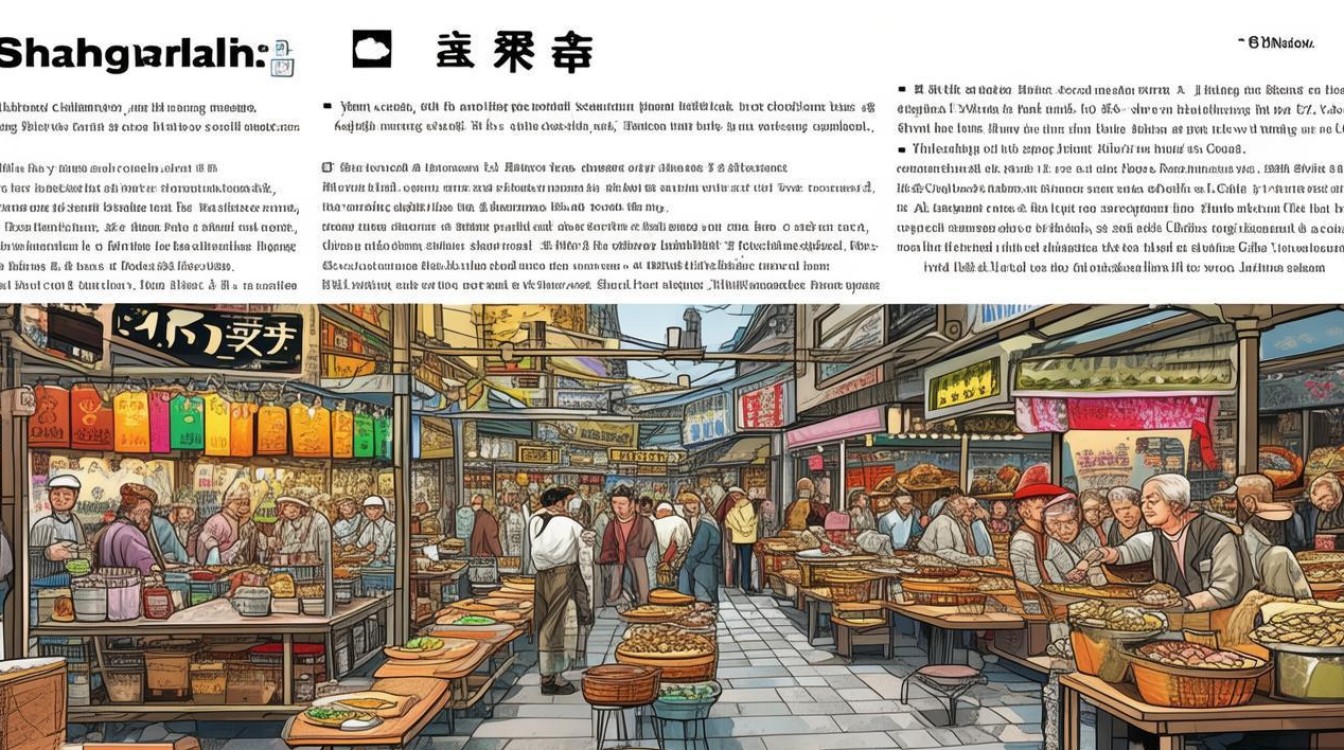Of course! Here are two versions of an English essay about Shanghai food. The first is a standard, well-structured essay suitable for school assignments. The second is a more descriptive and personal piece, written in a slightly more advanced style.

Version 1: Standard Essay
The Flavorful Tapestry of Shanghai Cuisine**
Shanghai, often called the "Pearl of the Orient," is a city where history and modernity blend seamlessly. This dynamic fusion is perhaps best reflected in its vibrant and diverse food culture, known as "Hu Cai" (沪菜). Shanghai cuisine is a fascinating tapestry woven from the city's unique geography, its history as a trading port, and the refined tastes of its people. It is a culinary experience that balances delicate flavors, fresh ingredients, and artistic presentation.
One of the most defining characteristics of Shanghai food is its emphasis on freshness and the natural taste of ingredients. Unlike the fiery spices of Sichuan or the heavy braises of Northern China, Shanghai dishes often feature a lighter, sweeter, and more savory profile. A perfect example is Shanghai Lion's Head Meatballs (上海红烧狮子头). These are enormous, tender pork meatballs braised in a savory soy-based sauce until they are incredibly soft and flavorful. The name "Lion's Head" comes from their impressive size, symbolizing power and prosperity. Another classic is Beggar's Chicken (叫花鸡), a whole chicken stuffed with aromatic herbs, wrapped in lotus leaves and clay, and baked until the meat is fall-off-the-bone tender. The cooking process seals in all the juices and infuses the chicken with a unique, earthy fragrance.
No exploration of Shanghai food is complete without mentioning its iconic street snacks. The city's bustling lanes and alleyways, known as longtang (弄堂), are home to some of the most beloved and affordable treats. Xiaolongbao (小笼包), or soup dumplings, are arguably Shanghai's most famous culinary export. These delicate parcels of thin dough contain a savory pork filling and, most remarkably, a rich, hot broth that bursts into your mouth with the first bite. Eating them requires skill: one must first bite a small hole to sip the soup before enjoying the rest of the dumpling. Equally famous is Sheng Jian Bao (生煎包), pan-fried pork buns with a crispy, golden bottom and a juicy, meaty filling. The satisfying crunch followed by a burst of flavor makes them a popular breakfast or late-night snack.
In conclusion, Shanghai food is more than just a meal; it is a story of the city itself. From the refined, homestyle dishes that reflect a love for quality ingredients to the lively, flavorful street snacks that capture the energy of its people, Shanghai's cuisine offers a delicious and unforgettable journey. It is a true reflection of the city's character: sophisticated, innovative, and deeply rooted in its cultural heritage. To taste Shanghai is to understand its soul.
Version 2: A More Descriptive & Personal Essay
A Taste of Shanghai: Where Tradition Meets the Wok**
To truly understand the soul of Shanghai, one must first taste it. The city's culinary landscape is a mesmerizing blend of the old and the new, a symphony of flavors that tells the story of its past as a tranquil water town and its present as a global metropolis. Shanghai food, or Huaiyang Cai, is a world away from the fiery intensity of other Chinese cuisines. It is a cuisine of subtlety, sweetness, and a deep respect for the natural essence of its ingredients.
At the heart of this culinary tradition are the classic benbang dishes, the home-style cooking that has been perfected over generations. These are dishes that speak of family, comfort, and artistry. Imagine Shanghai Lion's Head Meatballs, not as a simple meatball, but as a culinary masterpiece. Giant, succulent orbs of minced pork, slow-braised until they are impossibly tender, practically melting in your mouth. The rich, umami-laden sauce clings to each grain of rice, a testament to the patience and care of the chef. Then there is the legendary Beggar's Chicken, a dish as dramatic as its name. A whole chicken, marinated in a secret blend of spices and herbs, is encased in mud and lotus leaves and slow-cooked in an oven. The result is an aromatic, incredibly tender bird that is carved at the table, releasing an intoxicating fragrance that promises an unforgettable meal.
But the true spirit of Shanghai is found on its bustling streets, in the steamy stalls and crowded night markets where the city comes alive. This is the realm of the Xiaolongbao, or soup dumplings. These little treasures are a marvel of culinary engineering. A thin, pleated wrapper holds a delicate parcel of seasoned pork and, miraculously, a pocket of hot, savory broth. The first bite is an experience in itself: a gentle puncture of the skin, followed by the blissful sip of the piping hot soup, and finally, the savory satisfaction of the dumpling itself. Just a few steps away, the sizzle of the Sheng Jian Bao pan-fried buns draws in the crowds. Their defining feature is the golden, crispy bottom, a delightful contrast to the soft, doughy top and the juicy, flavorful filling within.
Ultimately, Shanghai food is a journey. It is a journey through time, from the refined elegance of its traditional restaurants to the vibrant, chaotic energy of its street food stalls. It is a cuisine that celebrates freshness, technique, and the simple joy of a shared meal. To eat in Shanghai is to experience a city that honors its past while embracing the future, one delicious bite at a time.











